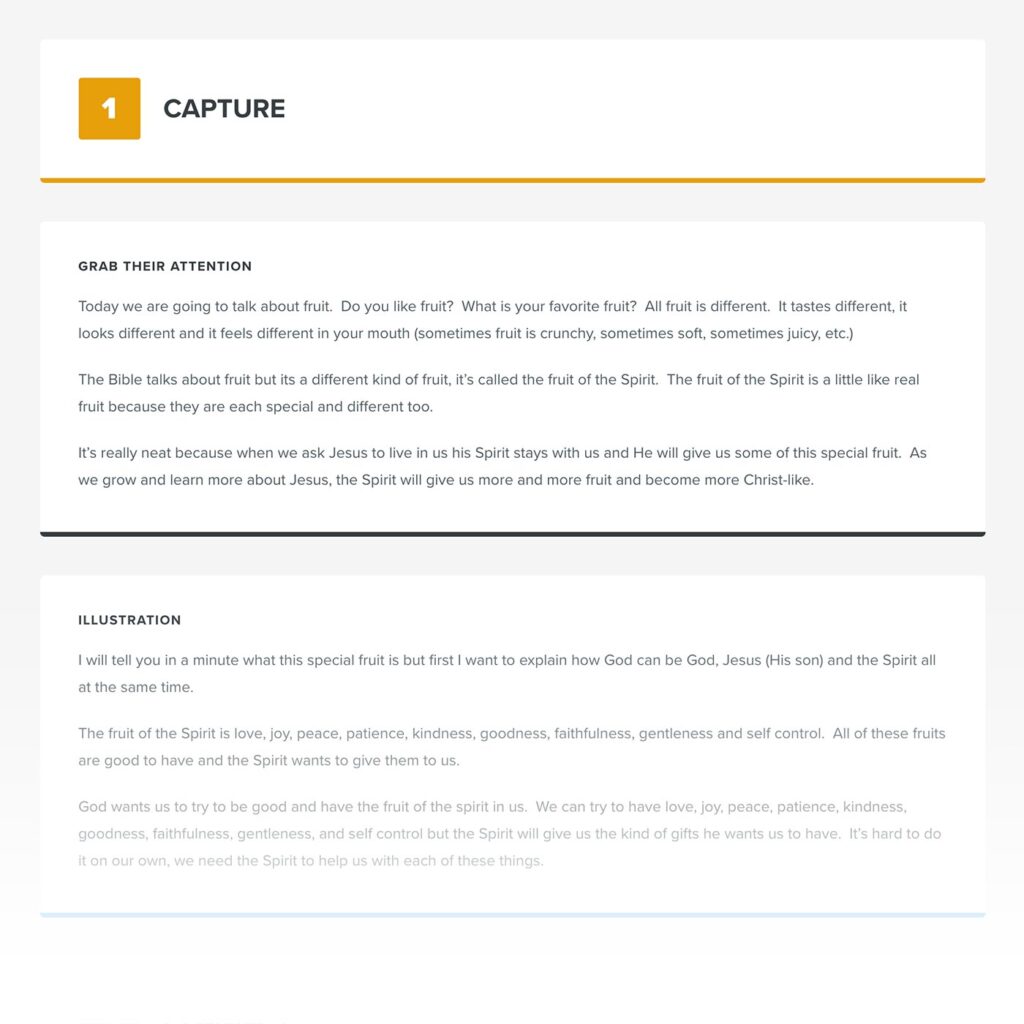The Youth Pastor
This template is designed to help youth leaders communicate the Bible in a way that’s both creative and applicable for teenagers.
If you’re in youth ministry, you don’t need us to tell you teaching teens is a different beast than teaching adults or children.
Teens are in that wonderful in-between spot. They’re capable of understanding many of the deep truths of God’s Word, so you don’t have to talk down to them or shy away from difficult subjects. However, when it’s time for the lesson, you’ve probably found that they’re still like small children in a lot of ways—needing something to capture their attention before they start talking about memes or standing on their heads.
That’s why we created this template specifically for youth pastors and leaders who want to create messages that will resonate with their students.
It’s a variation on some of the other sermon outline types already included in this guide, but we’ve tweaked it to account for short attention spans and rooms that can get crazy fast.
In short, we know you need a game plan that will allow you to keep the main things the main things while you preach for life change. If you’re using Sermonary (and if you’re not, why aren’t you?!), you can find this template, called “The Youth Pastor” in our pre-built template section.
We like to think of this outline in terms of the 5 C’s. Here they are:
- Capture: Grab their attention with an illustration that directs them toward the big idea of the message. Stating the big idea early and often can help you keep things on track if something happens to distract your listeners. Depending on your lesson, stories (from popular culture, history, or your life), video clips, songs, pictures, or object lessons can help interest students in what you’re about to share.
- Connect: During this part, you’ll connect students to God’s word. Do this by reading the passage and specific verses you’ll use as the basis for your teaching, then explain what the author of the text was trying to say to their original audience.
- Consider: Now, you can discuss what this teaching means today. For example, you could phrase it in terms like, “Jesus talks about _________ in this passage. Here’s what that looks like today.” During this part, you can reinforce your point with another illustration.
- Collide: Now it’s time to show your students how they can apply God’s word to their life, or what steps they can take to live out the teaching you’ve presented.
- Call: Finally, close with a call, or something that your students can do right now to put this lesson in action. It might be an altar call, taking communion, gathering together for prayer, signing up for a small group before they leave the building, calling someone and reconciling or any number of responses. The key is to create a moment where they can immediately respond to the Holy Spirit’s conviction.
Copyright 2017 Sermonary. This template is free for pastors to use in the context of their local church ministry. All commercial uses must have expressed written permission.

See how the Youth Pastor Outline works

Don't let sermon writing hang over your head all week
We believe writing and preparing sermons should be one of the highlights of pastoral ministry rather than one of the greatest burdens. That’s why we’ve created a sermon editor used by thousands of pastors to streamline their sermon writing process, inspire ideas to help them find momentum, and help keep the joy of ministry and sermon prep.